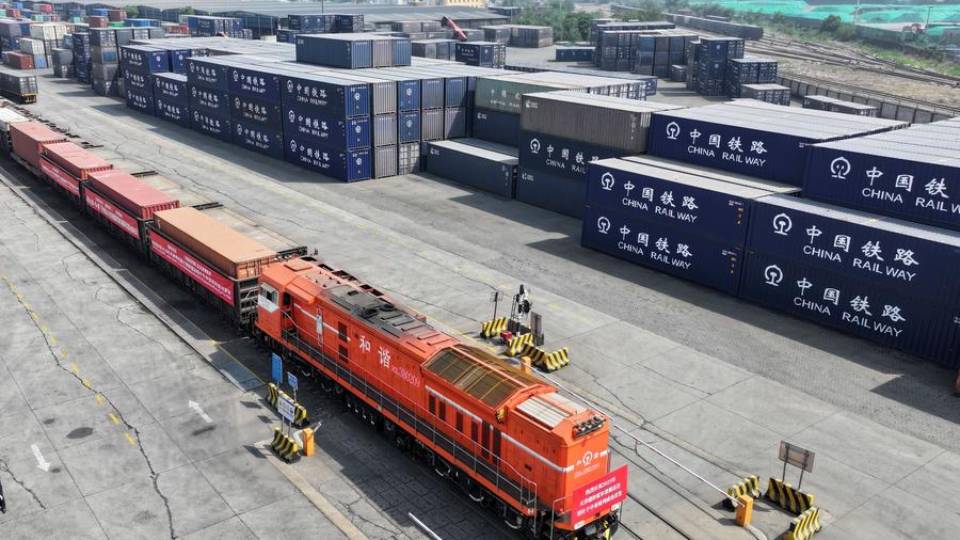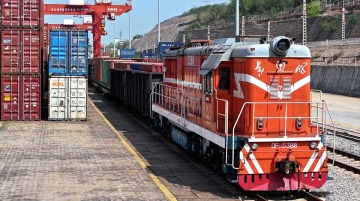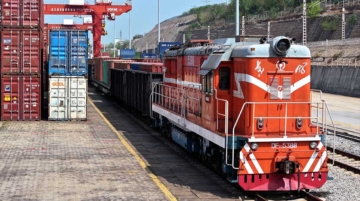
Despite widespread expectations that China’s engagement with Belt and Road Initiative (BRI) countries would slow, recent data tells a different story. According to a new report from the Griffith Asia Institute, Chinese involvement in the 150 BRI countries surged in the first half of 2025, reaching a total of $124 billion in investments and construction contracts. This already surpasses the $122 billion recorded for the whole of 2024.
What makes this trend more striking is not just the scale of growth, but its geographic shift. While Chinese engagement has waned in the Middle East, Europe, and East Asia, Central Asia has emerged as one of the most dynamic regions for BRI activity. Yet this surge is far from evenly distributed across the region. Kazakhstan stands out as the primary destination for Chinese capital, attracting $23 billion in the first six months of 2025 alone.
The driving force behind this influx lies in the metals and mining sector—particularly aluminum and copper. It is no coincidence that the push reflects mounting pressures in China’s domestic market and escalating tensions with the United States, which are prompting Chinese companies to secure strategic resources abroad.
Tariff Circumvention or Strategic Positioning?
The largest share of Kazakhstan’s recent BRI gains comes from a USD 12 billion aluminum complex by China’s private East Hope Group. The sprawling complex includes 11 bauxite and coal deposits in the cities of Kostanay and Aktobe, and a mining and processing plant will handle 6 million tons of raw material each year. On top of that, an electrolysis plant will produce 3 million tons of aluminum annually. A 4.5 GW coal-fired power station will power the energy-intensive process.
China’s decision to commit such an enormous investment in Kazakhstan’s aluminum sector is the product of both internal economic pressures and shifting global trade dynamics.
Domestically, China’s aluminum industry is struggling with chronic overcapacity. Years of rapid expansion have saturated the local market, and mounting trade restrictions around the world have narrowed the once-reliable option of exporting surplus production. This has pushed Chinese companies to look outward, seeking host countries to diversify its production network.
In this context, Kazakhstan’s push for greater value addition in foreign investment has aligned with this trend, encouraging companies to move beyond simply exporting raw or semi-processed aluminum, and instead establish full production chains within the country.
Furthermore, external pressures are reshaping the Chinese industrial strategy. The United States recently raised tariffs on Chinese aluminum from 10% to 25%, making direct exports less competitive. By building processing capacity in Kazakhstan, Chinese firms can bypass such tariffs while keeping access to key markets, including the U.S. and EU.
This is not simply about tariff avoidance—it is about geopolitical risk management. Producing aluminum outside mainland China reduces the risk of sudden trade disruptions and allows Beijing to keep its domestic companies running without dumping more surplus on a hostile global market.
Kazakhstan also offers strategic resource security. While China is the world’s largest aluminum producer, it still relies on imported bauxite and alumina for part of its supply. Developing integrated operations in Kazakhstan may give Chinese firms control over upstream inputs, reducing vulnerability to supply shocks from other regions.
Securing Resources in a Tight Market
Another major aspect of China’s engagement is its involvement in Kazakhstan’s copper industry. In the first half of 2025, China committed USD 7.5 billion to the sector. One flagship project, worth $1.5 billion, is led by the state-owned China Non-Ferrous Metal Ltd. It will be built near Aktogai in the Abai Region.
The facility will form an industrial cluster, linking one of the world’s largest copper mines with a modern smelting plant. The operation will supply Kazakhstan’s domestic demand for copper cathode—vital for the power industry, machine building, and other sectors—and will also produce refined gold, silver, and sulphuric acid.
China’s interest in Kazakh copper stems from an urgent necessity. Despite dominating the global copper value chain through vast smelting capacity, aggressive overseas mining investments, and tight control over refining infrastructure, China faces a shortage of copper ore.
Since late 2023, the global supply of copper concentrate has tightened. Mine closures, slower output growth, and disruptions in key producers like Chile and Peru—exacerbated by declining ore grades and project delays—have strained the market.
Chinese smelters have kept production near record levels by drawing down inventories and processing more recycled scrap. Yet the supply of ore concentrate remains insufficient for stable, long-term operations. Reports of planned production cuts due to ore shortages confirm this pressure.
In this context, the attraction of Kazakhstan is clear. The country holds the world’s 11th largest copper reserves—20 million tons—and ranks 11th in annual production, with 600,000 tons. Geography adds another advantage. Kazakhstan’s mines are closer to China’s industrial heartland than those in Latin America or Africa, reducing transport costs and supply chain vulnerabilities.
But this is not a one-sided arrangement. Like in the aluminum sector, Kazakhstan has made it clear that foreign investors cannot focus solely on raw resource extraction. Astana wants to expand local processing and keep more value inside the country.
The Non-Ferrous Metal Ltd. project reflects this shift. By pairing mining with smelting, China secures a reliable feedstock for its industry, while Kazakhstan gains technology transfer, industrial upgrading, and skilled jobs.
Strategically, the deal also serves Beijing’s broader Belt and Road goals. Investing in Kazakhstan’s copper sector diversifies China’s supply sources, reducing dependence on politically sensitive regions like South America and Africa.
The Path Ahead
China’s growing engagement in Kazakhstan’s metals sector reflects a deliberate policy of diversifying within its near abroad. The goal is twofold: bypass tariff barriers and secure critical resources to sustain its vast industrial base. This is not simply about spreading investments geographically—it is about reconfiguring production networks to address trade tensions, resource bottlenecks, and chronic overcapacity at home.
For Kazakhstan, this shift creates opportunities to align foreign capital with national development goals. By insisting on local processing and value addition, Astana ensures that Chinese projects contribute to industrial upgrading rather than merely extracting raw resources. This gives Kazakhstan both infrastructure and leverage in shaping how Chinese investments are deployed.
The trend is unlikely to slow. Kazakhstan’s vast, relatively untapped reserves make it a valuable market for Chinese capital. Beyond aluminum and copper, Chinese firms are already exploring investments in the country’s lithium deposits and developing projects to utilize tungsten resources. These moves confirm that Kazakhstan is becoming a strategic anchor in China’s resource security strategy—offering proximity, political stability, and mineral wealth.
In the years ahead, Kazakhstan’s challenge will be to balance its role as a resource supplier with its ambition to climb the value chain. For China, the task will be to deepen integration without sparking fears of overdependence. How both sides manage this dynamic will shape not just their bilateral ties, but also the broader economic landscape of Central Asia.
Yunis Sharifli is CGSP’s Non-Resident Fellow for Central Asia.








